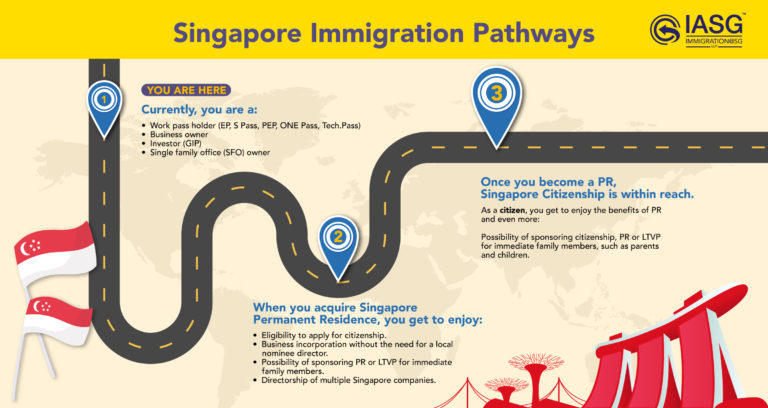Many candidates have made mistakes in Singapore PR applications but are not aware. Applying for Singapore PR is a significant step for many individuals seeking to establish a long-term presence in the country. While Singapore is known for its welcoming attitude toward skilled professionals, entrepreneurs, and investors, the PR application process can be intricate, confusing, and time-consuming. Unfortunately, several common mistakes often hinder applicants from successfully securing PR status.
-
Insufficient Documentation
One of the most prevalent mistakes in Singapore PR applications is the submission of incomplete or inaccurate documentation. Applicants are often required to provide a comprehensive set of documents, including educational certificates, employment records, and birth and marriage certificates. Failing to submit these documents in the correct format and/or missing any essential paperwork can lead to delays or outright rejection.
To avoid this mistake, applicants should carefully review the Immigration and Checkpoints Authority’s (ICA) guidelines and ensure that all required documents are provided in the prescribed manner. It is advisable to double-check each document’s authenticity and accuracy before submission.
-
Lack of Integration and Community Involvement
Singapore values individuals who actively contribute to the local community. The reason is straightforward – Singapore is a multicultural and multi-religious nation where differences are tolerated, respected, and even celebrated. Singapore’s history has been marred by racial riots that affected the economy, social harmony, and governance and Singapore has vowed that this cannot happen again. Therefore, foreigners who would like to live in SIngapore long-term, have to integrate with the society and emulate the Singaporean values of racial and religious harmony.
Some applicants may overlook the importance of showcasing their integration into Singaporean society and participation in community activities. Failure to demonstrate a commitment to community involvement can be a detrimental oversight. To rectify this mistake, applicants should actively engage in community events, volunteer work, local initiatives or even mentoring Singapore’s youth. Monetary donations to government-approved charities and blood donations help as well. For business owners, Corporate Social Responsibility (CSR) efforts can be done as well. Highlighting such involvements in the application can strengthen the case for PR candidates by demonstrating a genuine interest in being an integral part of Singaporean society.
-
Inadequate Financial Stability
While there is no price tag on a PR approval, financial stability is a crucial aspect of a Singapore PR application. Applicants must prove their ability to support themselves and their families without becoming a burden on the state. This means candidates must show a clear career path in Singapore in the form of consistent employment and/or business undertaking. A practical approach, this helps the government see how the candidate is contributing to Singapore economically. The industry and sector and expertise and knowledge of the candidate is taken into great account during the PR application process. This is to ensure that Singapore is accepting high quality individuals who fill in the gaps in the local workforce. Some individuals underestimate the importance of presenting a comprehensive financial portfolio, leading to application rejections.
Applicants should also provide detailed information on their income, savings, investments, real estate, and any other financial assets. Due to the terms of these financial portfolios, it shows the candidates’ long-term financial commitment in Singapore. Therefore, it is essential to paint a clear picture of one’s financial stability and capacity to contribute positively to the Singaporean economy.
-
Misunderstanding the Rejection Appeal Process
In the event of a rejection, some applicants make the mistake of submitting an appeal without addressing the underlying issues or misunderstanding the PR appeal process. Even though the ICA is not transparent on the reason for rejection, it is crucial to carefully analyse the PR application and rectify the deficiencies before submitting a new application or an appeal.
This is where an immigration consultant’s expertise comes in handy. With their exposure to various candidate profiles and backgrounds, understanding of immigration industry, and the knowledge on top sectors that Singapore focuses on, they can help candidates submit an appeal or reapply via a different angle. Addressing these issues comprehensively in the subsequent application or appeal can significantly improve the chances of success.
IASG has been established as a company for 10 years, with a combined immigration experience of more than 50 years. The immigration experts at IASG have been exposed to many different cases from 70+ nationalities worldwide. For enquiries on Singapore PR applications, call +65 6493 1830 or email to info@iasg.com.sg.
-
Typo Errors During Form Filling
Simple typo errors may seem small but it can be detrimental for PR applications. This is also one of the most common mistakes in Singapore PR applications that many candidates overlook or dismiss. Even though all PR applications are done online, typo errors reflect a shoddy submission, making the candidate look unprofessional in a formal setting and may not seem serious in becoming a Singapore PR. Do a thorough check a few times before submitting the application.
Mistakes in Singapore PR Applications
Securing Permanent Residency in Singapore is a significant accomplishment, but the process demands careful attention to detail and adherence to guidelines. By avoiding these common mistakes in Singapore PR applications, applicants can enhance their chances of a successful PR application.
Seeking professional guidance from professional agencies such as IASG can go a long way in navigating the complexities of the application process and achieving the desired outcome.







